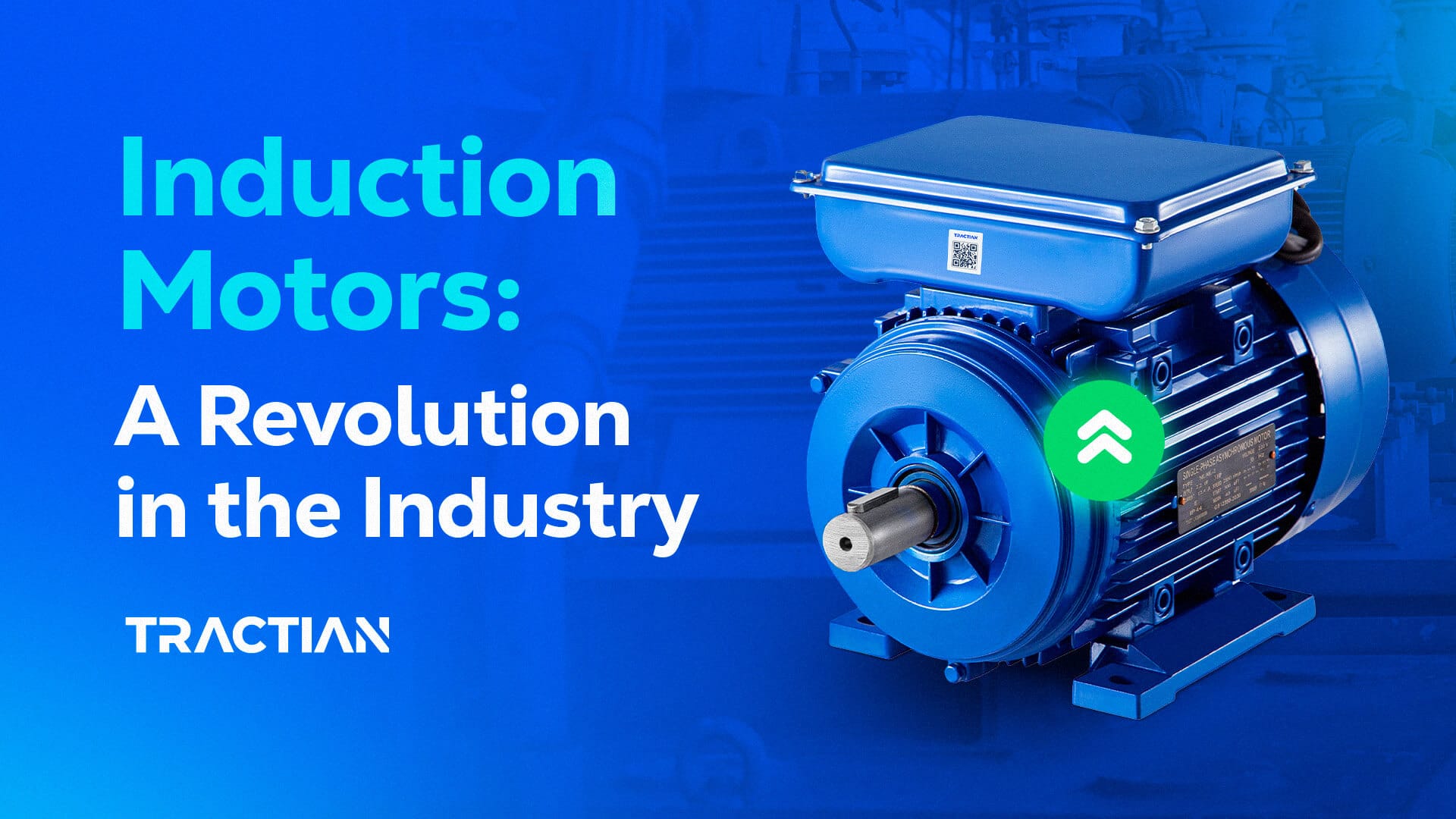Induction motors are widely used in industries – their popularity is undeniable. However, it’s important to understand why they’ve become so popular, and how their history has made the industry into what it is today.
In this article, we’ll explore these questions as well as provide you with detailed explanations of the importance of induction motors.
The Evolution of Induction Motors
The first prototype induction motors were developed by Nikola Tesla in the late 19th century. Over the following decades, these machines were improved, becoming robust, reliable, and efficient.

The construction of these motors has undergone a huge technological evolution, resulting in significant advances in terms of efficiency and power delivered. Additionally, there’s been a reduction in the size and weight of induction motors, which has allowed greater power in a smaller volume.

Currently, these motors have a huge installed base in all industrial sectors, and are widely used to motivate processes.
Worldwide Application of Induction Motors
Induction motors have a number of significant advantages. Their high efficiency is a fundamental characteristic, which allows them to operate over a wide load range. This is something that’s difficult to achieve with other types of equipment, like hydraulic or thermal systems, because they have an efficiency that drops rapidly when operated outside nominal conditions.
As a result, induction motors dominate the industry. They account for about 55% of energy consumption in industries, and use 25% of all energy generated. But, this is no surprise – the global induction motor market is estimated to reach and exceed $58.7 billion by 2030.
Classification of Electric Motors
To better understand the position of induction motors in the universe of electric motors, we can classify them according to their power source.

Motors that operate in direct current are generally used in automation processes, presses, elevators, and other places where precise speed control and high torque at low speeds are required.
AC motors, on the other hand, can be divided according to the number of phases. Single-phase motors are used in low-power applications, and in residential equipment such as washing machines and pumps.
On the other hand, three-phase motors can be divided into synchronous and asynchronous equipment. Synchronous motors are high-efficiency motors that use magnets to rotate the rotor synchronously with the magnetic field generated in the stator; they’re generally used in high-power applications where their energy efficiency is attractive in relation to their high cost.
Finally, asynchronous motors, also known as induction motors, operate based on electromagnetic induction.
Induction involves the interaction of the three phases, which creates a rotating magnetic field around the machine. The rotor acts as a conductor in this field, so a current is induced that generates a magnetic force and makes the motor turn.
The induction motor can be applied to low and high power loads. By using an inverter, its speed can be controlled and used in the most diverse industrial applications.
The Advantages of Induction Motors
Now that we understand the historical context and operation of induction motors, we can analyze why they’re considered one of the most crucial industry-revolutionizing inventions.
Advantages of these motors include:
- Simplicity of Construction: Induction motors are composed of few basic components, which makes them relatively simple to produce and maintain.
- Durability and Reliability: These motors are known for their ability to operate for long periods without maintenance; this is because they have few mechanical contact points, which results in low operating and maintenance costs.
- Adaptability: Induction motors can be easily adapted to meet the requirements of different applications in terms of size, power, and speed. This provides flexibility in industrial designs.
Efficiency and Performance: These motors can operate at different speeds and loads, making them ideal for various applications. Most machines operate with efficiencies above 85%, which contributes to reduced energy consumption and operating costs.
Comparing Motor Types
Although there are other motor types with specific strengths, induction motors are often the best choice in most industrial projects because of their simplicity, versatility, and reduced cost.

They stand out for their simple construction, durability, adaptability, and efficiency. It’s because of all these reasons that induction motors are a key part of modern industry.
Maintenance for Induction Motors
Now that we understand the importance of this motor for industries, we need to understand what actions are necessary to perform proper maintenance. This helps ensure its continued performance and extend its useful life.
Performing regular inspections is one of the first steps in keeping an induction motor in good condition. These visual inspections allow early identification of potential problems such as cracks, leaks, or excessive play.

Another crucial aspect of maintaining induction motors is proper lubrication. Many of these motors have moving parts that require lubrication for smooth and efficient operation. It’s essential to follow the manufacturer’s recommendations regarding the type and frequency of lubricant.
Additionally, cleaning and debris removal are essential practices when maintaining induction motors. Accumulation of dirt, dust, and debris on motor components can compromise motor performance or cause overheating.
Finally, the most effective technique for identifying poor engine conditions: online monitoring. With this technique, a sensor like the Smart Trac is installed in the engine; it continuously collects vibration and temperature data.

The data is sent to the TRACTIAN platform, which uses artificial intelligence (AI) to analyze the data and generate diagnostics, automatically identifying failure modes such as misalignment, looseness, and lack of lubrication.

In the image above, spectral analysis revealed a lubrication problem in a bearing that was due to the carpet of vibrations in the frequency range rising above 1000 Hz. The platform identified this and generated an alert to the maintenance team.
This capability enables maintainers to monitor the condition of each of their assets, and take action before serious damage occurs, ensuring reliability and preventing unexpected breakdowns.
Want to know more about monitoring your engines? Talk to one of our experts about how sensors paired with online monitoring can transform the way your team takes care of the most critical production assets.


